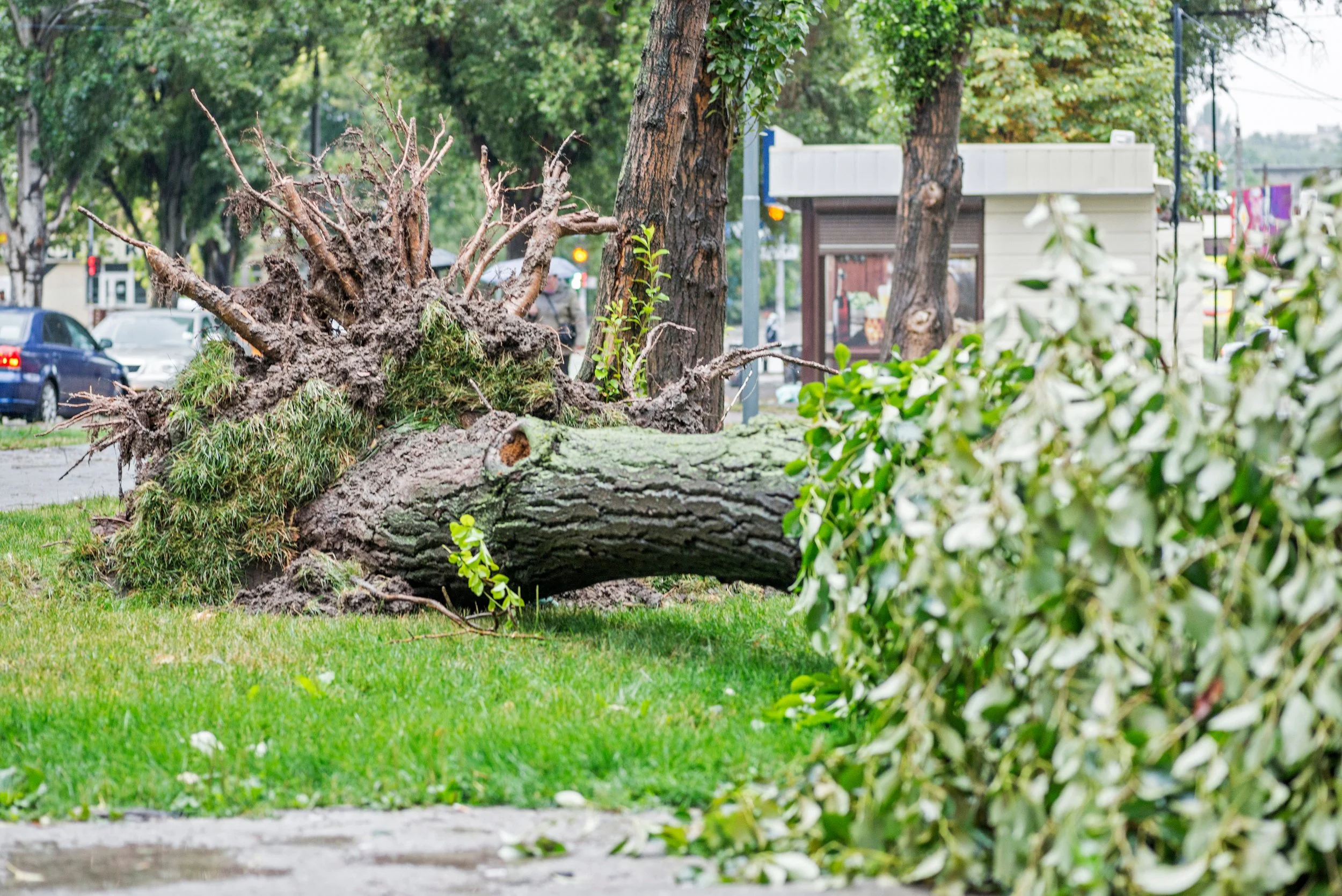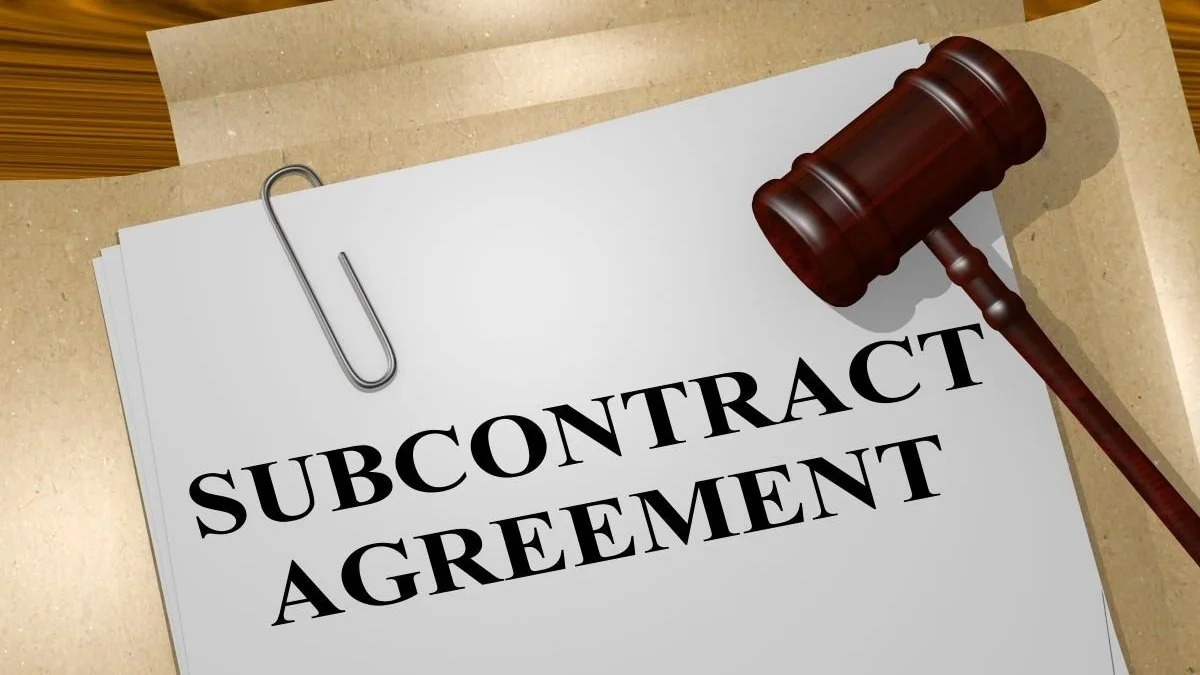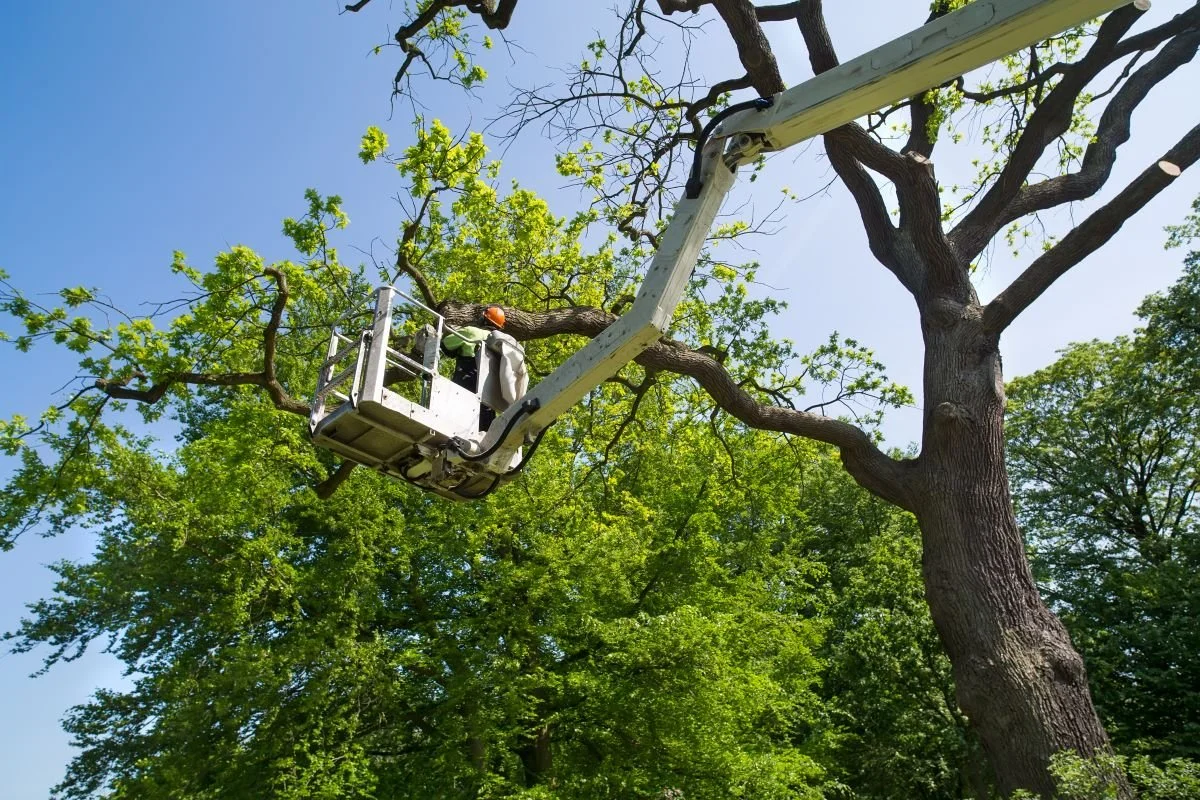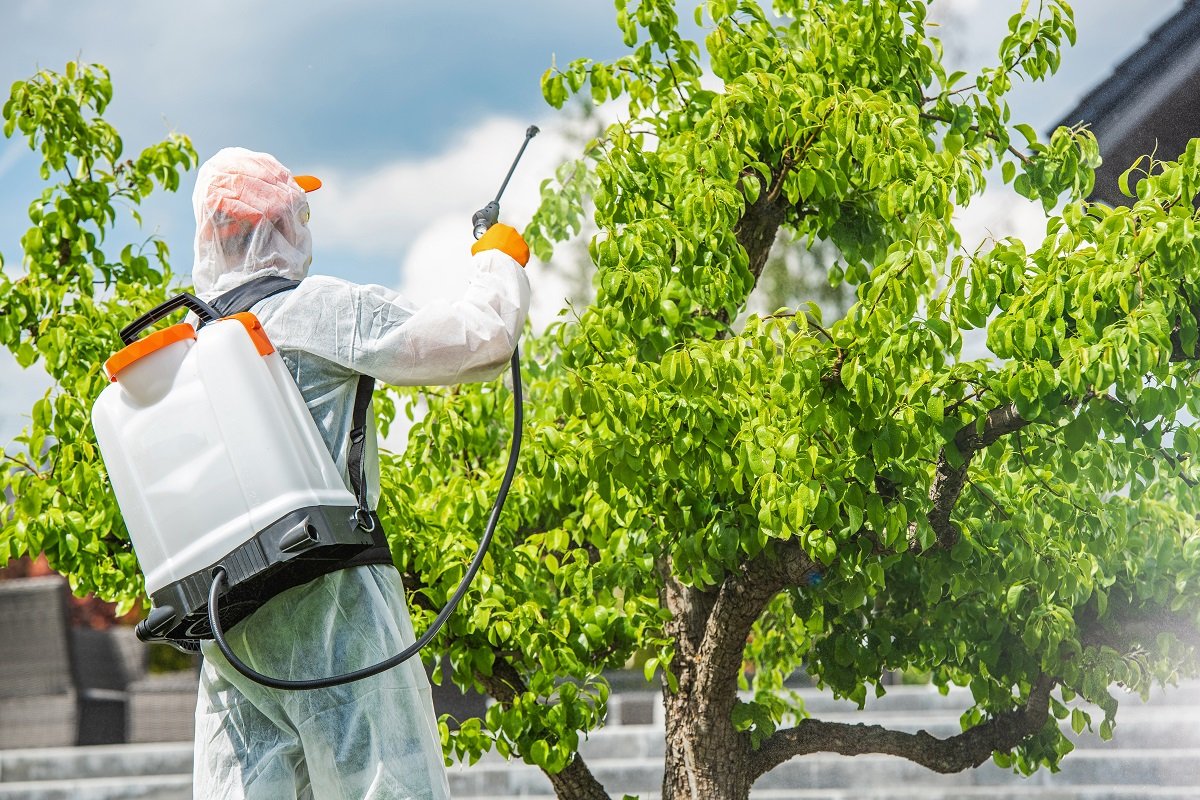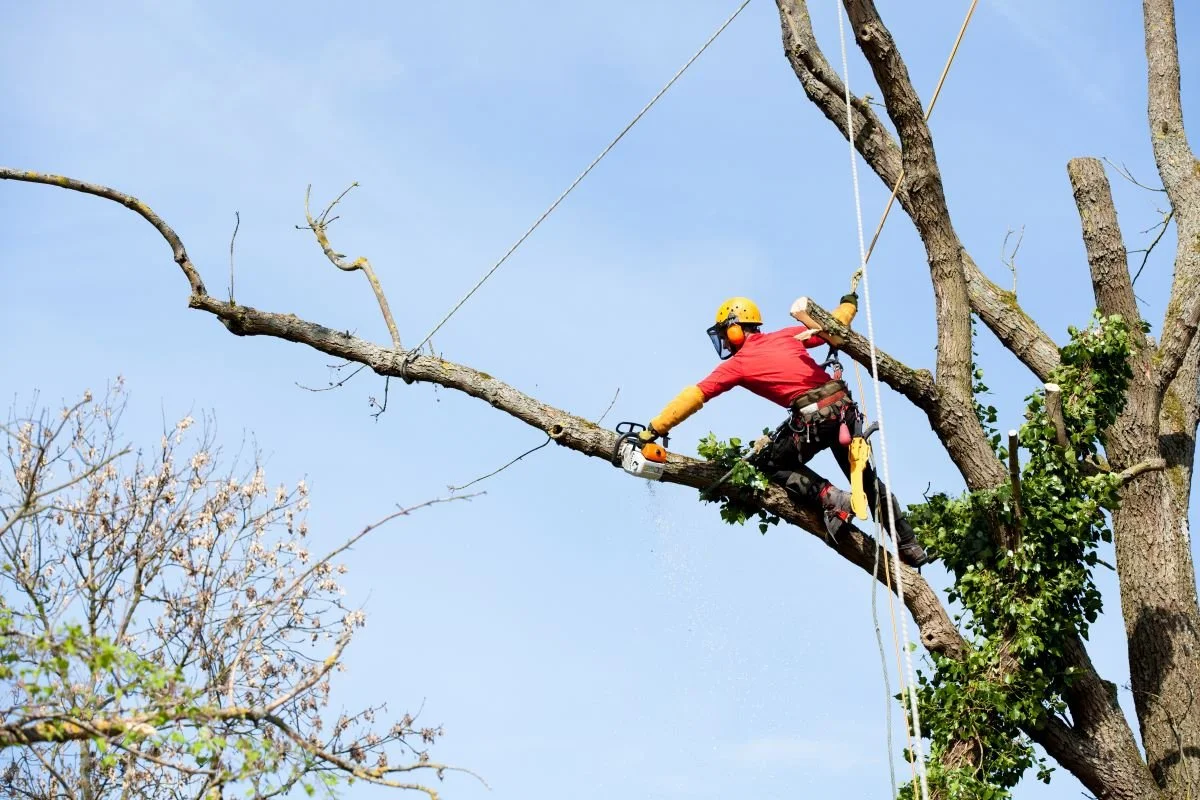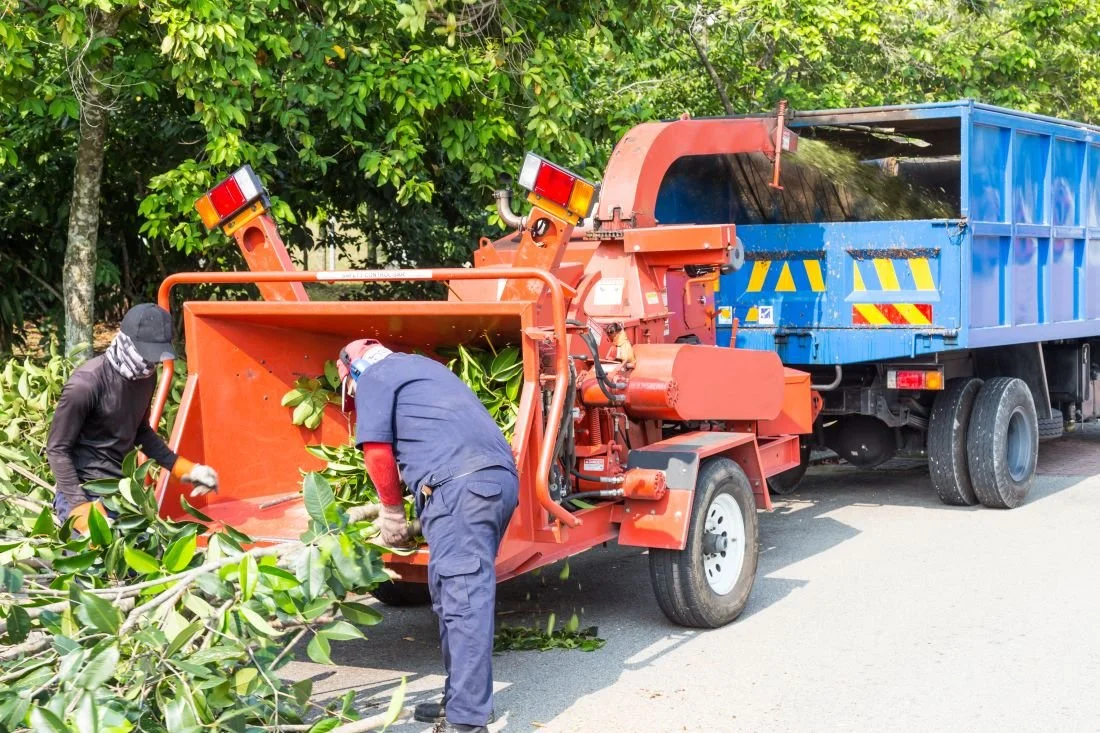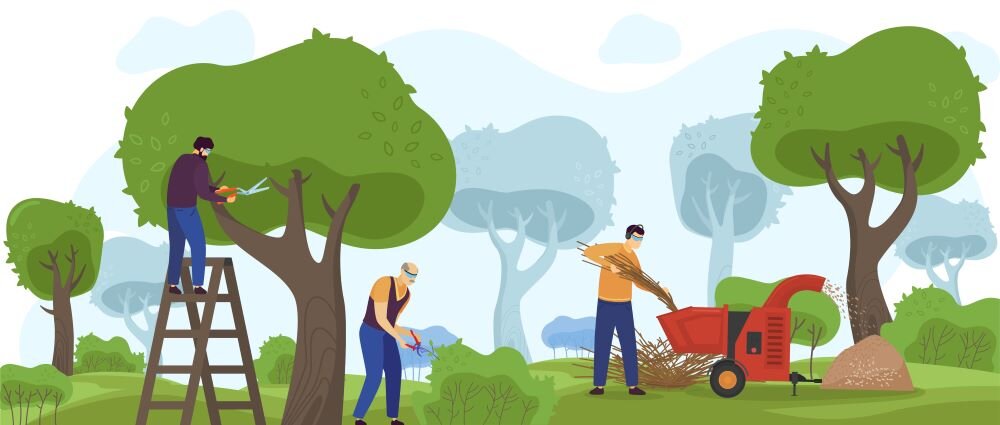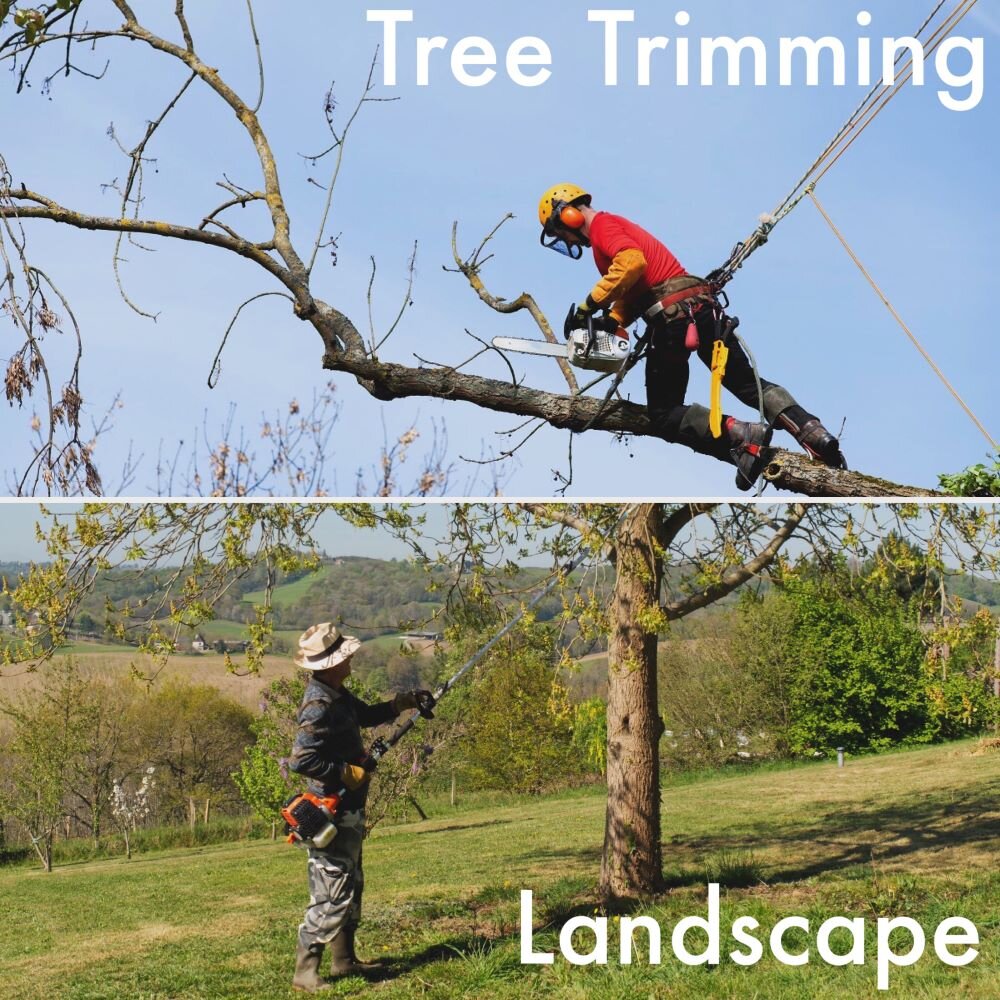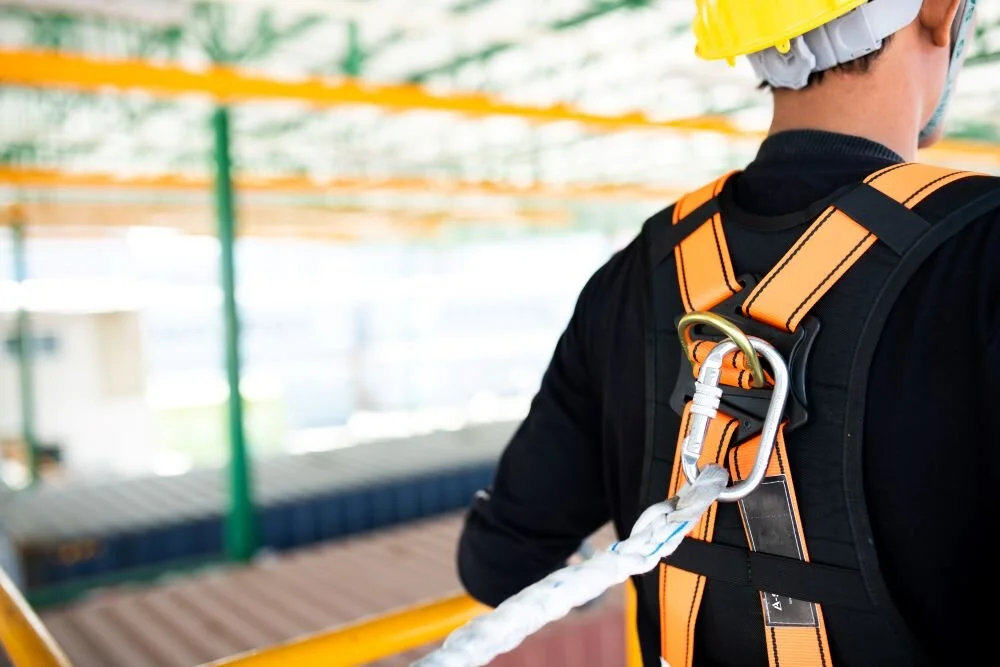
Industry News

Trim the Risk: Professional Liability for Tree Care Companies
Author, Rory Anderson, Partner, Account Executive, Rancho Mesa Insurance Services, Inc.
Whether you have a consulting arborist on staff or not, every tree care company has a professional liability exposure. Your general liability policy will likely exclude professional liability claims. A misdiagnosis of tree disease, damage to property, or an injury resulting from an error or miscalculation can be extremely costly. So, it is important to understand the risk, then make a decision on whether or not you would like to transfer that risk by purchasing a professional liability policy.
Author, Rory Anderson, Partner, Account Executive, Rancho Mesa Insurance Services, Inc.
Whether you have a consulting arborist on staff or not, every tree care company has a professional liability exposure. Your general liability policy will likely exclude professional liability claims. A misdiagnosis of tree disease, damage to property, or an injury resulting from an error or miscalculation can be extremely costly. So, it is important to understand the risk, then make a decision on whether or not you would like to transfer that risk by purchasing a professional liability policy.
Many tree care companies have certified arborists on staff that offer consulting and expert advice related to the health, safety, and management of trees. This type of work clearly has the highest need for professional liability insurance to cover any errors or incorrect advice that leads to financial loss, property damage, or bodily injury. A professional liability insurance policy would help protect the arborist by covering legal defense costs, settlements, or judgements if the arborist is found liable for errors or omissions related to their consulting work.
If you do not have a certified arborist on staff and you are simply performing tree care contracting work, you still have exposure to professional liability. General liability policies are in place to cover third party property damage and bodily injury that occurs as a result of your work. They do not, however, cover your work itself. If your tree care business removes the wrong tree or the tree that you pruned died from over-pruning, and your client sues for the cost of the tree and emotional distress, you would need faulty workmanship coverage to cover your work. For many of these instances, you may choose to absorb these costs internally; but, if the mistake was on a mature and rare tree, paying out of pocket may severely impact your balance sheet.
Although there are more examples, these are the two main professional liability exposures that tree care companies face. In a field as specialized as tree care and arboriculture, protecting your business is crucial.
Talk with your insurance agent about purchasing a professional liability policy to transfer your risk and give yourself peace of mind, knowing that you are covered for any unexpected or unpleasant surprises.
If you have any questions, please reach out to me at (619) 486-6437 or randerson@ranchomesa.com.
Understanding Insurance Options for Tree Care Vehicles with Permanently Mounted Equipment
Author, Rory Anderson, Account Executive, Rancho Mesa Insurance Services, Inc.
The vehicles that tree care companies are using today have become more specialized and more mechanized than ever. These specialized vehicles contribute to the overall productivity, profitability, and safety of the tree care industry.
Author, Rory Anderson, Account Executive, Rancho Mesa Insurance Services, Inc.
The vehicles that tree care companies are using today have become more specialized and mechanized than ever. These specialized vehicles contribute to the overall productivity, profitability, and safety of the tree care industry.
Many vehicles in a tree care company’s fleet have permanently mounted equipment. The crane is a great example. Both the knuckleboom and straight boom crane are permanently mounted onto the cab and chassis. Obviously, the value of the vehicle significantly increases the moment the crane is mounted.
When placing insurance coverage for this unit, it is important to understand the options. The liability coverage for specialty vehicles will always be insured on the commercial auto policy. However, when insuring the physical damage to your unit, you may have a couple different options.
The commercial auto policy will value the physical damage on actual cash value, which is a depreciated value. Actual cash value equals the replacement cost minus depreciation. In the event of a physical damage claim, the commercial auto insurance carrier will factor in depreciation when determining the amount to pay out for the claim. If you have an older crane, this may be an acceptable way to provide coverage. Just be certain that your insurance broker and carrier have the total value, including the crane, for the vehicle.
You can also split the physical damage coverage between commercial auto and inland marine. Often times, you can get replacement cost valuation on the inland marine policy, which is a more robust valuation. Replacement cost is the cost of a new one today, without factoring in depreciation. You can cover the physical damage of the vehicle (cab and chassis) on the commercial auto policy, but then you can cover the crane itself on the inland marine policy and get the replacement cost valuation. This strategy might make more sense if you are insuring a new, and expensive, crane. In the event of a total loss, the difference between actual cash value and replacement cost can be staggering.
Properly insuring your assets is a fundamental aspect of your risk management program. It is crucial for protecting your company’s financial stability. It is also important to work with your insurance broker to understand how your current insurance company will handle this.
If you have any questions, please reach out to me at (619) 486-6437 or randerson@ranchomesa.com.
Avoid Audit Nightmares with Properly Classified Tree Care Industry Equipment and Vehicle Maintenance Operations
Author, Rory Anderson, Account Executive, Rancho Mesa Insurance Services, Inc.
Tree care companies use specialized vehicles and equipment to perform their work. These assets are vital to the success of the company. To maintain their effectiveness, the machines need routine maintenance and upkeep. Issues arise when they break down, so it’s important to repair them immediately to limit business interruptions such as decreased productivity and profitability. The maintenance of the machinery can be a full time job, and some tree care businesses are lucky enough to have an employee, or a team of employees, dedicated to shop maintenance.
Author, Rory Anderson, Account Executive, Rancho Mesa Insurance Services, Inc.
Tree care companies use specialized vehicles and equipment to perform their work. These assets are vital to the success of the company. To maintain their effectiveness, the machines need routine maintenance and upkeep. Issues arise when they break down, so it’s important to repair them immediately to limit business interruptions such as decreased productivity and profitability. The maintenance of the machinery can be a full time job, and some tree care businesses are lucky enough to have an employee, or a team of employees, dedicated to shop maintenance. This type of work is a specialized skill and represents a key role within the organization. The intent of this article is to define how to properly classify these operations, so your company is prepared for any issues that may come up at the audit.
Workers’ Compensation
The Workers’ Compensation Insurance Rating Bureau (WCIRB) has created a specific class code for the maintenance of equipment and vehicles: 8227 Construction or Erection of Permanent Yards of Shops, which ONLY applies to the construction industry. In Appendix I, the WCIRB defines which industries are considered construction. Tree care, is not included on this list. Therefore, the WCIRB says, you must classify these operations in the governing class code, which is 0106 Tree Trimming, Repairing or Trimming. In fact, the WCIRB’s definition for 0106 Tree Pruning, Repairing or Trimming states that shop and yard storage operations are included: “TREE PRUNING, REPAIRING OR TRIMMING — N.O.C. — hand or mechanical power — including ground crews and shop, yard or storage operations.”
General Liability
Unlike workers’ compensation, in the tree care industry there is a general liability (GL) class code dedicated to the employees that are working on the maintenance of their own vehicles and equipment: 91590 Contractors Permanent Yards – Maintenance or Storage of Equipment or Material. It’s important to note that this class code does not consider maintenance or repairs on machinery or equipment other than those owned by the tree care company. The use of this code on your policy can be beneficial because the rate is usually cheaper than the tree care GL rate: 99777 Tree Pruning, Dusting, Spraying, Repairing, Trimming or Fumigating. So, it is safe to split payroll between these two class codes accordingly. Remember to keep proper records segregating the wages earned by your employees.
Overall, maintenance and repair employees are essential for maintaining the operational effectiveness, safety, and profitability of a tree care company. It is important to understand how to properly classify your equipment and vehicle maintenance operations so you can align your insurance policies correctly and avoid costly mistakes at the audit.
If you have questions or would like me to audit your current policies, please reach out to me at (619) 438-6437 or randerson@ranchomesa.com. I’m happy to help!
Don’t Get Skunked: Properly Insuring Large Tree Care Equipment
Author, Rory Anderson, Account Executive, Rancho Mesa Insurance Services, Inc.
These days, everything is more expensive. Between inflation and supply chain issues, the cost of equipment is steadily increasing. As the tree care industry becomes more mechanized, we see new technological advancements in machinery and equipment that are greatly improving the productivity, profitability, and safety of the industry. These big ticket equipment purchases are a major investment for a tree care business. It is important to make sure that your assets are insured correctly so you can rest easy knowing that if something were to happen to them, you are properly covered. This can provide financial protection and affirm business continuity.
Author, Rory Anderson, Account Executive, Rancho Mesa Insurance Services, Inc.
These days, everything is more expensive. Between inflation and supply chain issues, the cost of equipment is steadily increasing. As the tree care industry becomes more mechanized, we see new technological advancements in machinery and equipment that are greatly improving the productivity, profitability, and safety of the industry. These big ticket equipment purchases are a major investment for a tree care business. It is important to make sure that your assets are insured correctly so you can rest easy knowing that if something were to happen to them, you are properly covered. This can provide financial protection and affirm business continuity. There are two important factors to remember when scheduling equipment with your insurance broker:
1. Insurance Valuation: Replacement Cost or Actual Cash Value
In insurance, there are a few ways to value equipment, most commonly replacement cost (RC) and actual cash value (ACV). RC is the cost new today, without factoring in depreciation. ACV is the depreciated value (ACV = RC – depreciation). If you have a total loss on a piece of equipment that was rated on ACV, the insurance company will factor in depreciation when determining the payout amount, so you may not receive enough money to replace your equipment with a new item. With inflation and recurring supply chain issues over the past few years, tree care equipment is hard to get and more expensive.
For example, a 2020 chipper costs more new today than it did in 2020. Replacement cost coverage takes this into account by providing coverage for the current cost of replacing your equipment with a new item at current market rates. We recommend that you have the carrier provide replacement cost coverage on all items, so look for that definition when reviewing with your broker.
2. Equipment Valuation
Secondly, it is critical that you execute a pre-renewal meeting with your insurance broker. In that meeting, your broker should be asking you to review the equipment values and make adjustments where necessary, appropriate to the true valuation. As discussed, equipment values are steadily increasing. Therefore, it is imperative that you are increasing those values on the upcoming policy term to be certain you will get the most money back in the event of a claim.
Properly insuring your assets is a fundamental aspect of your risk management program. It is crucial for protecting your company’s financial stability, business continuity, and safeguards your reputation and operational stability. If you have questions about properly insuring your equipment, please reach out to me at (310) 753-6804 or randerson@ranchomesa.com.
Developing A Strong Subcontract Agreement with Tree Care Partners
Author, Drew Garcia, Vice President of the Landscape Group, Rancho Mesa Insurance Services, Inc.
Having strong service partners that support your customers outside of your core operations is an important part of business. Many commercial landscape businesses have regional relationships with professional tree care companies to support the needs of their customers.
Author, Drew Garcia, Vice President of the Landscape Group, Rancho Mesa Insurance Services, Inc.
Having strong service partners that support your customers outside of your core operations is an important part of business. Many commercial landscape businesses have regional relationships with professional tree care companies to support the needs of their customers.
Here are some of the key components when setting up your overall subcontract program, specific to the tree care industry.
Written Subcontract Agreement
Work with your attorney to draft a master subcontract agreement or project/job specific subcontract agreement since the type of indemnity agreements can change from state to state.
Among other things this agreement should clearly define indemnity and provide insurance requirements.
Insurance Requirements
Limits
Collaborate with your insurance advisor to specify the types of coverages and policy limits you will require in the subcontract agreement.
Arborist Errors & Omissions Coverage
The tree care company should carry some type of Arborist E&O endorsement or have a separate policy providing coverage for Arborist E&O.
Depending on the scope of work, if the tree care company is providing written arborist reports or providing professional consulting services, require them to carry professional liability coverage.
Additional Insured
Ask the tree care company to name you as an additional insured for both ongoing and completed operations coverage, including primary/non-contributory and waiver of subrogation on their general liability policy in your favor.
Certificates of Insurance
Collect certificates of insurance and automate the process of requesting an updated certificate as the policy period nears expiration.
Transferring risk where possible is critical for landscape contractors. Using these initial steps as you build out a best practice subcontract agreement can insulate your company from the ever growing exposures that exist as you engage with partner trades.
To discuss your company’s management of risk, contact me, Drew Garcia, at (619) 937-0200 or drewgarcia@ranchomesa.com.
Surviving the Blaze: Developing Asset Relocation Plans in Wildfire-Prone Regions
Author, Rory Anderson, Account Executive, Rancho Mesa Insurance Services, Inc.
As a tree care company operating in wildfire-prone areas, the safety of your crew, equipment, and vehicles is paramount. Wildfires can be unpredictable and devastating, posing a significant threat to your valuable assets. To mitigate risk of potential losses, it is important to have an effective asset relocation plan in place. This plan ensures that in the event of a wildfire, your vehicles and equipment have a safe place, reducing the risk of damage or total loss. This safe relocation address should be in an urban area, surrounded by buildings – not rural vegetation. It can be a mall parking lot or any urban lot. Let’s explore the reasons why having an asset relocation plan is crucial for tree care companies.
Author, Rory Anderson, Account Executive, Rancho Mesa Insurance Services, Inc.
As a tree care company operating in wildfire-prone areas, the safety of your crew, equipment, and vehicles is paramount. Wildfires can be unpredictable and devastating, posing a significant threat to your valuable assets. To mitigate risk of potential losses, it is important to have an effective asset relocation plan in place. This plan ensures that in the event of a wildfire, your vehicles and equipment have a safe place, reducing the risk of damage or total loss. This safe relocation address should be in an urban area, surrounded by buildings – not rural vegetation. It can be a mall parking lot or any urban lot. Let’s explore the reasons why having an asset relocation plan is crucial for tree care companies.
Reduce Insurance Costs
Insurance is a critical aspect of risk management for tree care companies. While insurance can help cover losses from wildfires, having a well-executed asset relocation plan can potentially lead to reduced insurance premiums. Insurance carriers may view your proactive approach to asset protection as a lower risk, leading to more favorable terms and lower premiums. This can result in cost savings for your business.
Protect Your Investments
Tree care contractors often invest in specialized equipment and vehicles, which are essential for their operations. A wildfire can damage these valuable assets, leading to significant financial losses. An asset relocation plan allows you to move your equipment and vehicles to a safer location to protect your investment.
Ensure Business Continuity
The aftermath of a wildfire can be chaotic. Having an asset relocation plan in place ensures that your equipment and vehicles are moved to a secure location well before a wildfire strikes, keeping your assets safe. This allows your business to continue operating after the disaster with minimal disruptions. Maintaining continuity is essential for your income and reputation.
An asset relocation plan is an important component of your risk management program as a tree care company, especially if you’re located in a rural area. If your business is located in California, Cal Fire has a valuable online resource called Fire Hazard Severity Zones Maps. This resource shows the areas in your county that are considered high fire hazard severity zones. It is recommended that you make your relocation address somewhere where the fire hazard severity is considered low or moderate.
Should you have further questions on this topic, reach out to me directly at randerson@ranchomesa.com or call me on my direct line at (310) 753-6804.
Improving Safety with Mechanization in the Tree Care Industry
Author, Rory Anderson, Account Executive, Rancho Mesa Insurance Services, Inc.
Mechanization refers to the process of introducing machinery, equipment, or automated systems to replace human labor. Today, the tree care industry is becoming more mechanized with many technological advancements that are greatly improving the productivity, profitability, and safety of the industry. Let’s focus on safety.
Author, Rory Anderson, Account Executive, Rancho Mesa Insurance Services, Inc.
Mechanization refers to the process of introducing machinery, equipment, or automated systems to replace human labor. Today, the tree care industry is becoming more mechanized with many technological advancements that are greatly improving the productivity, profitability, and safety of the industry. Let’s focus on safety.
Tree care accidents can be unforgiving and can have major consequences. Here are some safety benefits that come with mechanization:
Reduces manual labor: mechanization reduces the amount of physical labor required to perform tasks. Tree care tasks are physically exhausting. Specialized machinery reduces the strain on workers, minimizing the risk of fatigue-related accidents.
Improves efficiency and reduces exposure to hazards: Mechanized equipment reduces the time workers spend in potentially hazardous situations, working at heights or in proximity to heavy tree limbs. By executing tasks more quickly and accurately, it reduces the overall exposure to potential accidents and hazards.
Reduces human error: even the most experienced arborists can make mistakes. Machines can mitigate human error by using automation. For instance, tree removal machines with automated cutting and lifting mechanisms can carry out tasks precisely as programmed.
Promotes training: the use of mechanized equipment requires special training and certification. This contributes to a higher level of competency and safety awareness within your organization.
Mechanization is the future of the tree care industry. Of course, traditional methods must always be available. However, we can limit our human footprint and liability by investing in this new-age equipment. Fewer accidents increases productivity and profitability.
For questions please contact me at (619) 486-6437 or randerson@ranchomesa.com.
Pollution Liability for Tree Care Companies
Author, Rory Anderson, Account Executive, Rancho Mesa Insurance Services, Inc.
Most tree care companies use pesticides, herbicides, fungicides, and other chemicals as a part of their operations. Even if the company does not offer plant health care, many tree care professionals still use hydraulic fluids, gasoline, and other fluids to operate or maintain equipment and vehicles. The use of heavy equipment and chemicals, while operating exclusively outdoors, opens the company up to environmental exposure.
Author, Rory Anderson, Account Executive, Rancho Mesa Insurance Services, Inc.
Most tree care companies use pesticides, herbicides, fungicides, and other chemicals as a part of their operations. Even if the company does not offer plant health care, many tree care professionals still use hydraulic fluids, gasoline, and other fluids to operate or maintain equipment and vehicles. The use of heavy equipment and chemicals, while operating exclusively outdoors, opens the company up to environmental exposure.
Pollution coverage is a standard exclusion on any general liability policy, but business owners can cover this exposure with a stand-alone contractor’s pollution liability (CPL) policy. CPL insurance is distinct in that it offers protection for contractors in the event their work, or any work done on their behalf, leads to a pollution or environment-related claim of bodily harm, property damage, cleanup and other remediation expenses. In today’s green and eco-minded society, filling this gap is more important than ever.
If the tree care company offers plant health care as a service, the herbicide/pesticide applicator coverage endorsement is an important part of your insurance program and can offer some coverage to replace damaged or dead plants/trees in the event an arborist mixes a bad batch or over sprays. However, the herbicide/pesticide applicator coverage endorsement may not pick up remediation efforts, or the business interruption losses that result from the clean-up. The best way to transfer your environmental exposure would, again, be putting a contractor’s pollution liability policy in place with at least a $1,000,000 limit.
Pollution liability insurance is an important part of the risk management strategy and can help protect tree care contractors from environmental liabilities by providing coverage for legal fees, cleanup costs, and other expenses associated with environmental pollution.
For a policy review or questions about which policies match your tree care company’s risks, please contact me at (619) 486-6437 or randerson@ranchomesa.com.
All Licensed California Tree Care Companies Now Required to Carry Workers’ Comp. Insurance
Author, Rory Anderson, Account Executive, Rancho Mesa Insurance Services, Inc.
Within the last few weeks, all licensed tree care companies received a notice in the mail from the California State License Board (CSLB) stating that effective January 1, 2023, the CSLB is requiring that all companies with a D-49 Tree Service Contractor license must have workers’ compensation insurance, regardless of whether they have employees.
Author, Rory Anderson, Account Executive, Rancho Mesa Insurance Services, Inc.
Within the last few weeks, all licensed tree care companies received a notice in the mail from the California State License Board (CSLB) stating that effective January 1, 2023, the CSLB is requiring that all companies with a D-49 Tree Service Contractor License must have workers’ compensation insurance, regardless of whether they have employees.
Currently, licensed tree care companies without employees are exempt from having workers’ compensation insurance. This new requirement comes after Governor Gavin Newsom signed Senate Bill 216 into law on September 30, 2022 which requires all contractors (not just tree service contractors), with or without employees, to have workers’ compensation insurance by January 1, 2026.
According to an article by Red Bluff Daily News, “The California State License Board research confirms that many of the approximate 50 to 60 percent of licensed contractors who currently claim an exemption to workers’ compensation insurance do use employees.”
This not only puts the non-insured tree workers and the public at risk, but it also poses an issue of unfair advantage to the companies who do not carry workers’ compensation. This creates a disadvantage for tree service contractors who play by the rules, as they are subject to higher business costs.
This new requirement will hold every tree service contractor accountable to the same standards by leveling the playing field, and it will protect the tree workers and our public.
How does this impact you, as a licensed tree service contractor?
If you currently have workers’ compensation insurance in place, confirm with your broker that they have properly provided a certificate of insurance to the CSLB to show proof of insurance. You may also check your license status with the Department of Consumer Affairs to confirm it is up to date.
If you are a tree care company that does not currently have employees, contact me to explore workers’ compensation insurance options for your business, effective January 1, 2023.
If you would like to discuss further, please reach out to me at randerson@ranchomesa.com or call me at (619) 486-6437.
Rise in Pure Premium Rates Impacts Tree Care Industry
Author, Rory Anderson, Account Executive, Rancho Mesa Insurance Services, Inc.
Pure premium rates are determined by the Workers’ Compensation Insurance Rating Bureau (WCIRB). The rates reflect the amount of losses that an insurance carrier can expect to pay out in claims for that particular class of business. Every year, the WCIRB submits pure premium rates to the California Department of Insurance for approval. These pure premium rates are comprised of loss and payroll data submitted to the WCIRB by all the insurance companies in California.
Author, Rory Anderson, Account Executive, Rancho Mesa Insurance Services, Inc.
Pure premium rates are determined by the Workers’ Compensation Insurance Rating Bureau (WCIRB). The rates reflect the amount of losses that an insurance carrier can expect to pay out in claims for a particular class of business. Every year, the WCIRB submits pure premium rates to the California Department of Insurance for approval. These pure premium rates are comprised of loss and payroll data submitted to the WCIRB by all the insurance companies in California.
Each workers’ compensation insurance company has its own base rate for the 0106 Tree Pruning class code, for example. In order to establish the base rate, the insurance carrier takes the approved pure premium rate from the WCIRB and applies their factor that includes general overhead expenses, sales and marketing expenses, taxes and fees, and profit. So, if the pure premium rates are increasing, the insurance companies’ base rates are also increasing.
The 2022 pure premium rate in the tree care industry (class code 0106) has increased to $11.36 per $100 of payroll, which is roughly a 9% increase from last years $10.39. This means that the overall workers’ compensation claim activity in the tree care industry is up about 9%, and the WCIRB is recommending that the workers’ compensation insurance carriers increase their base rates to price for that increase in claim activity.
What can you do to prepare for this change and limit the impact to your tree care business?
Lower your claim frequency and severity with a consistent, robust safety and training program, focusing in on root causes of the claims.
Control your experience MOD with quarterly claim reviews and an aggressive return to work program.
Maintain strong carrier partnerships and continuity with carriers that have excellent in-house claims handling.
Benchmark your company with the rest of the tree care industry to see how you compare to your peers. As part of our proprietary TreeOne™ program, we have created a Key Performance Indicator (KPI) dashboard for the tree care industry that puts this information at your fingertips. To see how you compare with your peers, request the KPI Dashboard for your company.
For more information on rising pure premium rates, contact me at (619) 486-6437 or email me at randerson@ranchomesa.com.
Automobile Rental Reimbursement for Tree Care Companies
Author, Rory Anderson, Account Executive, Rancho Mesa Insurance Services, Inc.
A tree care company’s auto fleet includes specialty vehicles like bucket and box trucks. These vehicles are important assets for the company and critical for completing jobs. Getting into an auto accident is already stressful, but what can add more grief is if the vehicle that gets damaged is vital for your business. In this case, you will be looking to rent a replacement vehicle during the repair window so that your business can maintain productivity and profitability. With this in mind, rental reimbursement coverage helps cover the rental cost incurred while your vehicle is repaired after a covered loss.
Author, Rory Anderson, Account Executive, Rancho Mesa Insurance Services, Inc.
A tree care company’s auto fleet includes specialty vehicles like bucket and box trucks. These vehicles are important assets for the company and critical for completing jobs. Getting into an auto accident is already stressful, but what can add more grief is if the vehicle that gets damaged is vital for your business. In this case, you will be looking to rent a replacement vehicle during the repair window so that your business can maintain productivity and profitability. With this in mind, rental reimbursement coverage helps cover the rental cost incurred while your vehicle is repaired after a covered loss.
In the tree care business, renting a specialty truck is no easy task. Rental bucket and box trucks are expensive and limited. Renting these specialty trucks can cost up to $600 per day. In addition to the cost, the COVID-19 pandemic continues to cause problems with the supply chain of products, including auto parts. So, not only is it expensive to rent these specialty trucks, but it is also taking longer than normal to get vehicles repaired.
The standard rental reimbursement coverage will offer between $50 and $100 per day for 30 days. With how costly the tree care specialty trucks are and with the amount of time it is taking to repair these trucks, you can see how you might find yourself in a sticky situation if one of these key trucks goes down. However, certain insurance carriers will offer to increase the per day amount as well as extend the period of rental reimbursement coverage, if needed.
Partnering with an insurance professional who specializes in the tree care industry is important to make sure that your bucket and box trucks have the correct rental reimbursement coverage in the case of an auto accident.
To discuss this potential gap within your current insurance program or any other commercial insurance for your tree care business, contact me at (619) 486-6437 or randerson@ranchomesa.com.
Hydraulics Safety in the Tree Care Industry
Author, Rory Anderson, Account Executive, Rancho Mesa Insurance Services, Inc.
Tree care professionals regularly work with equipment that utilizes hydraulics: aerial lifts, stump grinders, and chippers, just to name a few. Injuries from hydraulic fluid leaks are very serious and can result in amputation.
Author, Rory Anderson, Account Executive, Rancho Mesa Insurance Services, Inc.
Tree care professionals regularly work with equipment that utilizes hydraulics: aerial lifts, stump grinders, and chippers, just to name a few.
Injuries from hydraulic fluid leaks are very serious and can result in amputation. These injuries occur when hydraulic fluid is lost through a small hole and comes in contact with the skin of a worker. The injury can at first look like a mild, small puncture wound – but the truth is that they are anything but minor.
Hydraulic fluids are toxic and act as a poison to the body. In almost all cases, treatment (surgery) is immediately required to save the workers limb.
Stump grinders, chippers, and other equipment that tree care professionals use commonly run at 4,000 PSI, and the pressure needed to penetrate your skin is only 100 PSI. So, it is vital that employees be trained on how to safely use hydraulic equipment.
Hydraulics safety trainings should include:
an overview and description of which equipment utilizes hydraulics;
proper techniques to check for leaks;
how to handle leaks;
how to handle injuries;
regular maintenance and upkeep on hydraulic hoses; and
the appropriate time to replace hydraulic hoses.
Make sure hydraulics safety is on your list of rotating topics that are regularly discussed with your crews at safety meetings.
For assistance with building your library of safety material for tailgate topics, reach out to me directly at (619) 486-6437 or randerson@ranchomesa.com.
Top Three Professional Liability Exposures for Tree Care Companies
Author, Rory Anderson, Account Executive, Rancho Mesa Insurance Services, Inc.
Professional tree care companies must have a general liability policy that will cover incidents that cause bodily injury or property damage resulting from their operations. However, there are situations that will not be covered under a typical general liability policy and would require professional liability coverage, or, in the tree care industry it would specifically be Arborist Errors and Omissions coverage. Here are three exposures that tree care companies face that a professional liability policy would address.
Author, Rory Anderson, Account Executive, Rancho Mesa Insurance Services, Inc.
Professional tree care companies must have a general liability policy that will cover incidents that cause bodily injury or property damage resulting from their operations. However, there are situations that will not be covered under a typical general liability policy and would require professional liability coverage, or, in the tree care industry it would specifically be Arborist Errors and Omissions coverage. Here are three exposures that tree care companies face that a professional liability policy would address.
Tree Work
At times, tree care companies could inadvertently remove the wrong tree or prune a tree incorrectly causing various issues. As a result, the client may bring action against the tree care company for a number of reasons, including:
The loss of the intrinsic value the tree provided – shade, design, look, etc.;
The dollar value of the tree for replacement;
Mental distress suffered by the client.
Adjacent Trees
A professional tree care company can also be held responsible for damage caused by a failed tree that they did not even touch, but was on or nearby a recent jobsite. To be held liable for a failed tree (when a tree experiences structural collapse or breakage of any part of the tree: trunk, roots, or limbs) that they did not perform work on may seem unfair, but the client may claim that the arborist is the specialist and has a responsibility to point out any trees on a jobsite that could be dangerous.
Professional Tree Advice (Consulting)
Most tree care companies have a certified arborist who offers tree consulting and will give a professional opinion on whether or not a tree is safe. This leaves the tree care company potentially responsible in the event a tree that was deemed safe actually fails and causes property damage, or even worse, bodily injury to a human.
Tree work, adjacent trees and consulting are three common exposures not typically covered by a general liability policy; therefore, professional tree care companies must strongly consider some form of professional liability coverage. Work with your trusted insurance advisor and have them thoroughly assess your exposure to these concerns. To learn more about professional liability coverage for the tree care industry, listen to our StudioOne™ Safety and Risk Management Podcast Episode 99.
Contact me for a complete risk analysis of your operations at randerson@ranchomesa.com or (619) 486-6437.
How Rising Pure Premium Rates Will Impact the Tree Care Industry
Author, Rory Anderson, Account Executive, Rancho Mesa Insurance Services, Inc.
In California, each workers’ compensation insurance company has its own set of base rates for each class of business. In order to come up with their base rate for each class code, the insurance carrier applies their Loss Cost Multiplier (LCM) to the Workers’ Compensation Insurance Rating Bureau’s (WCIRB) pure premium rates.
Author, Rory Anderson, Account Executive, Rancho Mesa Insurance Services, Inc.
In California, each workers’ compensation insurance company has its own set of base rates for each class of business. In order to come up with their base rate for each class code, the insurance carrier applies their Loss Cost Multiplier (LCM) to the Workers’ Compensation Insurance Rating Bureau’s (WCIRB) pure premium rates.
Pure premium rates are determined by the WCIRB and include the loss cost of claims for that particular class of business. Those costs include:
The cost of the claim itself (i.e., indemnity, medical and expense payments)
Loss adjustment expenses
Future loss adjustment expenses (e.g., fees for expert witnesses and salary/overhead for outside legal counsel)
A pure premium rate reflects the amount of losses that an insurance carrier can expect to pay out in claims for that class of business. Every 6 months, the WCIRB submits pure premium rates to the California Department of Insurance for approval. These pure premium rates are based on loss and payroll data submitted to the WCIRB by all the insurance companies in California.
A carrier’s LCM will include those additional expenses separate of the pure premium rate considerations. These would include a carrier’s:
General overhead expenses (e.g., rent, payroll, employee benefits, etc.)
Sales and Marketing
Taxes, licenses and fees
Profit
The 2021 pure premium rate in the tree care industry (class code 0106) has increased to $10.50 per $100 in payroll, which is roughly a 3.5% increase from last year’s $10.15. This means that the overall workers’ compensation claim activity in the tree care industry is up about 3.5%, and the WCIRB is recommending that workers’ compensation insurance carriers increase their base rates to address this change.
As a tree care professional, what can your company do to prepare for this change and mitigate the impact to your business? Reviewing your claims experience, benchmarking your company with the tree care industry, looking for root causes of the claims, and then implementing best practices safety trainings will go a long way in providing you a path to insulate you from future changes like these.
As part of our proprietary TreeOne™ program, we have created a Key Performance Indicator (KPI) dashboard for the tree care industry that puts this information at your fingertips. To see how you compare with your peers, request the KPI Dashboard for your company.
For more information on rising pure premium rates, contact me at (619) 486-6437 or randerson@ranchomesa.com.
A Tree Care Company’s Guide to the Annual Workers’ Compensation Audit
Author, Rory Anderson, Account Executive, Tree Care Group, Rancho Mesa Insurance Services, Inc.
The premium for your workers’ compensation policy is based on the type of work you do, and the amount of payroll incurred. By maintaining proper payroll records, segregating the wages earned by your employees, you may reduce the cost of your workers’ compensation insurance. The final audit is the process that calculates the last premium due. It compares the estimated payrolls to actual wages paid during the policy year. The audit may result in a refund or additional premium due. Workers’ compensation audits also determine if the classification codes quoted at inception accurately reflect the scope of work performed during the policy period. Insurance carriers charge more premium for higher risk operations, like tree trimming.
Author, Rory Anderson, Account Executive, Tree Care Group, Rancho Mesa Insurance Services, Inc.
The premium for your workers’ compensation policy is based on the type of work you do, and the amount of payroll incurred. By maintaining proper payroll records, segregating the wages earned by your employees, you may reduce the cost of your workers’ compensation insurance. The final audit is the process that calculates the last premium due. It compares the estimated payrolls to actual wages paid during the policy year. The audit may result in a refund or additional premium due. Workers’ compensation audits also determine if the classification codes quoted at inception accurately reflect the scope of work performed during the policy period. Insurance carriers charge more premium for higher risk operations, like tree trimming.
In my last article, we looked at how it may be possible for a tree care company to use the 0042 landscape classification code at specific times, if they are trimming hedges or trees from the ground. We noted, however, that when any of the tree care company’s operations are off the ground, at any elevation, that payroll would be classified in 0106 tree trimming. Also, any type of work that is associated with the tree trimming (e.g., clean-up, chipping, stump grinding, etc.) would also be included as 0106.
The basis of premium is the payroll earned during the policy period. Payroll includes regular wages, salaries, overtime, bonuses, vacation pay, sick pay, commissions, cash payments, and other substitutes for money. Summarizing and segregating wages allows for the possible reduction of exposures and lower premium charges. Consider the following for potential adjustments at final audit:
If employees are engaged in both landscape construction/maintenance work, and tree trimming, you can segregate wages between operations and utilize both classifications. Earnings can be split by classification if time cards are maintained showing hours worked by activity, and payroll reports summarize hours and wages earned for each class. Segregation is based on records of actual hours worked; you cannot split earnings by percentages or projected bid calculations.
The wages for miscellaneous employees can be split by class if timecards segregate earnings by type of work performed. If no segregation is maintained, payroll will be assigned to the highest rated class.
Premium overtime is excludable if records document the hours and remuneration earned for regular hours and overtime hours. This includes earnings paid over and above the straight time earnings. If overtime is paid at one and one-half times the regular rate of pay, 1/3 of the total overtime pay can be excluded. If double time is paid, ½ of the overtime pay is excludable.
California allows the exclusion of deductions which are part of a Section 125 Cafeteria Plan. This might include medical, dental, and vision premiums. If these deductions are summarized by employee and by classification, they can be excluded from the workers comp wages.
Severance pay and tips are excludable. Maintain severance agreement letters documenting final payment agreements.
Depending on the type of entity insured, the earnings of sole proprietors, partners, and corporate officers may be excludable. Talk with your agent regarding qualifications and endorsements which can be issued as adjustments to your policy.
Workers’ compensation exposures may include costs for additional earnings paid outside of payroll. This could include bonuses, flat auto allowances, cash payments, casual labor, and subcontractors who could be considered employees. If subcontractors are hired, be sure to use licensed contractors who operate their own business. Always obtain and keep copies of the certificates of insurance from subcontractors to confirm independent coverage.
To prepare for final audit, maintain proper payroll records segregating and summarizing wages earned by your employees. The Auditor will:
Advise you on which reports to prepare for final audit. This typically includes payroll records and summaries, quarterly payroll tax reports, general ledger, cash disbursements, and/or 1099 reports.
Assist you in identifying cost saving measures. They will help to recognize and explain how to take advantage of all potential credits, such as premium overtime, severance, Cafeteria 125 plan deductions, etc.
Ask for a description of the business, and the job duties of employees to verify classification assignments.
Review all findings and suggestions, and address any additional questions you may have.
For questions about your annual audit, contact me at (619) 486-6437 or randerson@ranchomesa.com
Choosing the Right Classcode: A Guide to Distinguishing Tree Trimming from Landscape Work
Author, Rory Anderson, Account Executive, Rancho Mesa Insurance Services, Inc.
Many tree care companies perform work that could be classified as “landscape gardening.” The risk and exposure associated with this class code is minimal compared to those associated with tree trimming. Without the additional tree care exposure, landscape gardening workers’ compensation insurance rates are significantly lower than tree trimming rates. Common questions we receive from our tree care clients are…
Author, Rory Anderson, Account Executive, Rancho Mesa Insurance Services, Inc.
Many tree care companies perform work that could be classified as “landscape gardening.” The risk and exposure associated with this class code is minimal compared to those associated with tree trimming. Without the additional tree care exposure, landscape gardening workers’ compensation insurance rates are significantly lower than tree trimming rates. Common questions we receive from our tree care clients are:
What is the difference between the two class codes?
I’ve always only used 0106-Tree Trimming, is it possible for me to use 0042-Landscape Gardening as well?
How can I differentiate which specific operations are considered landscape gardening and which are considered tree trimming?
When more than one classification applies to operations that are closely related, it is important to understand the boundaries of each classification. Let’s take a look at how the California Workers’ Compensation Insurance Rating Board (WCIRB) defines both class codes:
0106 Tree Pruning, Repairing or Trimming
This classification applies to pruning, repairing or trimming trees or hedges when any portion of the operations requires elevation, including but not limited to using ladders, lifts or by climbing. This classification includes clean-up, chipping or removal of debris; stump grinding or removal; and tree spraying or fumigating that are performed in connection with tree pruning, repairing or trimming. This classification also applies to the removal of trees that retain no timber value.
0042 Landscape Gardening
This classification applies to the construction, maintenance, repair or installation of landscape systems or facilities designed for public or private gardens or other areas in order to aesthetically, architecturally, horticulturally or functionally improve the grounds within or surrounding a structure or a tract or plot of land. This classification includes the preparation and grading of plots or areas of land for the installation of landscaping; pruning, repairing or trimming trees or hedges when none of the operations at a particular job or location require elevation, including but not limited to using ladders, lifts or by climbing; or chipping operations performed in connection with landscape gardening. This classification also applies to spraying or spreading lawn fertilizers or herbicides, or weed abatement for fire hazard control purposes.
According to these definitions, a tree company may be able to use the 0042 landscape class code at specific times. However, when any of the operations are off the ground, that payroll would be classified in tree trimming 0106. Also, any type of work that is associated with the tree trimming (e.g., clean-up, chipping, stump grinding, etc.) will also be included as 0106. Here is a quick real-world example that will help to clarify.
A tree company has 10 employees that worked on a specific job to trim a large Eucalyptus tree. There were only two workers that actually climbed and trimmed the tree, and all the rest of the employees worked on the ground to clean up the limbs and branches that were being cut and fell from the tree. All 10 employees must be classified into the 0106 class code because the ground crew operations were in connection with the tree trimming, where the climbers were operating off of the ground.
The next day, on a completely different job site, the same tree company with 10 employees worked on a new job to trim a handful of 8 ft Japanese maple trees. For this job, all of the work was performed from the ground and there was never a point where any of the workers operated from elevation (e.g., ladders, lifts, climbing, etc.). Three of the workers trimmed with pole saws from the ground, while the other seven employees cleaned-up the debris and used the chipper. All 10 of the employees could be classified into the 0042 landscape class code because there was never a time where a worker left the ground to trim.
Properly documenting and maintaining valid records is critical in order for your company to utilize both class codes properly. Without proper documentation, you could be setting your company up for a large additional premium owed at audit.
Stay tuned to my follow up article and podcast as I share how to prepare for and execute a successful audit when both of these two class codes are applicable to your operations.
Aerial Lift Best Practices
Author, Rory Anderson, Account Executive, Rancho Mesa Insurance Services, Inc.
Aerial lifts have become extremely popular over the past few years in the arboriculture industry. An aerial lift is an ideal way to reach higher trees safely and securely. They can also make potentially hazardous tree removal safer and more efficient. This equipment requires extensive training to operate responsibly, and the lack of this training has led to an increase in accidents and injuries with aerial lift devices.
Author, Rory Anderson, Account Executive, Rancho Mesa Insurance Services, Inc.
Aerial lifts have become extremely popular over the past few years in the arboriculture industry. An aerial lift is an ideal way to reach higher trees safely and securely. They can also make potentially hazardous tree removal safer and more efficient. This equipment requires extensive training to operate responsibly, and the lack of this training has led to an increase in accidents and injuries with aerial lift devices. According to OSHA, between 2009 and 2013 there were 47 aerial lift operator fatalities among the tree care industry in the US. To make for a safer operation, here are a few suggestions and reminders about Best Practices for working with aerial lifts:
Inspect the Lift
Visual inspections ensure that lifts remain functional and safe, while often saving potentially hours of maintenance and future medical bills. Conducting the visual inspection should include a close eye on hydraulic leaks, cracks, loose bolts, and worn or discolored hoses. It’s important to remember to always be cautious and not use your hands or any body parts to check for hydraulic-fluid leaks - always use a piece of cardboard or wood. When hydraulic fluid is under pressure, it can penetrate deep into skin and poison flesh, causing disastrous injuries. Never stick your hand around a fitting or hose to feel for a leak.
Function Testing and Drift Testing
Before climbing into the bucket, lift operators should check the lower controls and run the lift through a full range of motion. These controls are critical as they could very well come into use while rescuing a lift operator from the bucket in an emergency situation.
After the lower controls have been tested, a drift test should also be performed to make sure there are no issues with the hydraulics. To test for drift, set a traffic cone off to the side of the lift and move the bucket over the top of the cone, leaving a few inches in between. Turn the truck off and wait five minutes to make sure the boom doesn't drift down and touch the cone. If it does drift, take the truck out of service until it can be repaired.
Suiting Up
It is now time to put on your fall-protection harness. Make sure your harness fits properly and has a dorsal attachment. Once your harness is on, attach your fall restraint system to the harness and then to the life support attachment on the lift. It is virtually impossible to fall out of an aerial lift device if you wear proper fall protection and make sure it’s attached to the lift, every time.
When used correctly, aerial lifts can be effective and efficient tools for Arborists. When properly set up and tested, they can move easily on the jobsite and provide safe access in hard to reach areas. Their design allows for mobility and flexibility which can increase the crew’s safety, production and profitability.
Rancho Mesa’s Risk Management Center offers training materials covering aerial lifts, elevated work platforms and fall protection as online courses, tailgate talks and posters, as well as sample evaluation forms and policies. For additional information on the use of aerial lifts or other Best Practice safety measures for the arborist industry, please reach out to me, Rory Anderson at randerson@ranchomesa.com and learn more about our TreeOne Program.
Don’t Trim Down Your Safety Procedures
Author, Rory Anderson, Account Executive, Landscape Group, Rancho Mesa Insurance Services, Inc.
Trees require regular maintenance to ensure their health and safety. Dead or diseased trees must be cut down in order to prevent injuries to people or damage to nearby structures. Maintaining trees through trimming is a dangerous task, even for experienced professionals. Unfortunately, accidents do occur. The three most common types of serious accidents experienced by tree trimmers are…
Author, Rory Anderson, Account Executive, Landscape Group, Rancho Mesa Insurance Services, Inc.
Trees require regular maintenance to ensure their health and safety. Dead or diseased trees must be cut down in order to prevent injuries to people or damage to nearby structures. Maintaining trees through trimming is a dangerous task, even for experienced professionals. Unfortunately, accidents do occur. The three most common types of serious accidents experienced by tree trimmers are falls, electrocution, and being struck by falling objects.
Falls
Falls are a common accident for tree trimmers. They can occur by slipping off of a ladder, falling from a roof, or falling out of a tree. The typical fall victim is unsecured or not properly secured. Using proper personal protective equipment is essential in preventing falls.
Electrocution
The risk of electrocution is very high when working around power lines. Some trees are planted near overhead power lines and there is a risk of electrocution to anyone trimming branches. The worker may accidentally touch the wires, or a falling branch could knock down the wires resulting in a tree trimmer touching the lines. The most common type of victim violates minimum approach distances and makes contact with the power lines through a conductive tool/object such as pruning shears. Training employees on minimum approach distances and proper trimming techniques when working around power lines can help prevent electrocution.
Falling Objects
According to the Centers for Disease Control, being struck by a falling object is the most reported tree trimming accident. A falling object is typically an entire tree or its branches/limbs, but it could also be loose equipment like a chain saw. Most victims are struck by a tree or tree limb after it falls in an unexpected direction; however, careless accidents do occur in specified drop zones. Communication between employees in the tree and on the ground is imperative to ensure the safety of all.
Tree trimming professionals face dangerous hazards on a daily basis and it is extremely important to take precautionary safety measures to make sure that they are doing everything they can to reduce risk. Safety training materials for tree trimmers are available through the Risk Management Center.
For information about Rancho Mesa's TreeOne™ program, contact Rory Anderson at (619) 937-0164.

